Friday 26 February 2010
Thriller Task Filming - (Friday, 26/02/2010)
I believe the filming went well as we managed to get five or six takes of the pan shot in order to ensure we had a good take, as well as at least four takes of the establishing shot. We also recorded non-diegetic sound of twigs snapping so that we could add this to the pan shot.
Some problems we encountered whilst filming included the weather conditions, which included cold, rain and wind, which was, although useful for our filming environment, did not actually help the filming situation, and made it incredibly difficult to film whilst the camera was wet and we were cold.
Finally, we captured our footage to our T drive (media4), and learned how to separate clips so that it would be easier to edit together.
We will continue filming next Wednesday (03/03/2010) after school, and will be filming the indoor shots and the scenes with the house.
Monday 22 February 2010
Thriller Planning - Genre Research (Monday, 22/02/2010)
Thriller is a broad genre that includes numerous and often overlapping sub-genres. Thrillers are characterized by fast pacing, frequent action, and resourceful heroes who must thwart the plans of more powerful and better equipped villains.
Characteristics:
Thrillers often take place in exotic settings such as foreign cities or deserts. The heroes in most thrillers are frequently "hard men" accustomed to danger: law enforcement officers, spies, soldiers, seamen or aviators. However, they may also be ordinary citizens drawn into danger by accident. While such heroes have traditionally been men, women lead characters have become increasingly common.
Components:
In recent years, when thrillers have been increasingly influenced by horror or psychological-horror exposure in pop culture, an ominous or monstrous element has become common to heighten tension. The monster could be anything, even an inferior physical force made superior only by their intellect, a supernatural entity, aliens, serial killers, or even microbes or chemical agents.
Genres:
Action (e.g. James Bond), Conspiracy (e.g. Capricorn One), Crime (e.g. Se7en), Disaster (e.g. Earthquake), Drama (e.g. The Illusionist), Erotic (e.g. Fatal Attraction), Psychological (e.g. Strangers on a Train), Spy (e.g. Bourne Triology) or Religious (e.g. Da Vinci Code)
(All information obtained from: http://en.wikipedia.org/wiki/Thriller_(genre), therefore information may not be reliable)
Thriller Planning - Risk Assessment (Monday, 22/02/2010)
Red-High risk
Orange- Medium risk
Green- Low risk
To reduce the risk of injury, all people involved should be careful when walking, especially when walking with heavy equipment and around areas with uneven ground and fallen debris.
Drowning
Cast members and crew should take extra precaution when filming next to the river to avoid situations such as falling in.
Damage to equipment
All participants must take extra care when handling filming equipment so that no damage takes place.
Illness
If a member of the cast or crew falls ill and is unable to attend an arranged date, a replacement should be considered or a new date should be proposed.
Weather conditions
If the weather is unsuitable at the proposed date of filming, indoor scenes should be filmed instead and conditions should be coped with as best as possible. Crew should make sure no filming equipment is damaged due to weather.
Assault
If any scenes should be filmed at night, crew and cast must take safety measures in order to stay as safe as possible when filming outside to reduce the risk of an unwanted event taking place.
Thriller Planning - Props (Monday, 22/02/2010)
The rest of our shots will mainly use locations, rather than props, to add atmosphere to our thriller.

Bag
 Shaun's costume: Front
Shaun's costume: Front
Thriller Planning - Characters (Monday, 22/02/2010)
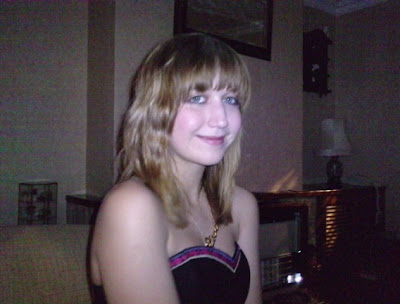 Natasha Hoskins:
Natasha Hoskins:We chose Natasha as she is available at the time of filming, and also a responsible and trustworthy person, who we are confident will be able to attend all our arranged sessions. She will be playing the 'mysterious woman' character in the rocking chair, however only her hands and eye will be visible.
 Shaun Cutts:
Shaun Cutts:Shaun is also an available character, as well as being part of the filming group, so already knows the plotline and how we intend to film our scenes. He is also taking AS Level drama, which makes him a prime candidate for the role. We are also confident he will be able to attend all sessions, making him reliable. He will be playing the role of the male character who appears primarily in the forest scenes.
Thriller Planning - Questionnaire Results & Analysis (Monday, 22/02/2010)

The most popular pace of thrillers was fast, as most people would prefer lots of action to be happening quickly in order to create suspense and mystery.
However, I personally would prefer a slower paced thriller, so the story line is better played out.

The most popular choice was a minimal amount of dialogue, which is most likely because this will build suspense and is conventional as a thriller.
This result will be taken into account, as this was the desired result when compiling the questionnaire.

Suspense was a popular choice, as this is a traditional characteristic of a thriller, however is often followed by surprise.
We will take this result into account, and have planned a mostly suspense-based thriller.

100% of the people polled said that they would like only a few key characters as opposed to a large cast, in order to keep the focus on the storyline and the main characters.

Five people said they would prefer the filming to be done in the day time, and also five people said they would prefer the filming to be done at night time.

The vast majority of those polled said they would prefer an action-based thriller, which would also fit with the popular choices of a fast paced film.

A small minority wanted the film to be shot ‘abstractly’ (non-conventionally), but the larger proportion of the sample wanted it to be shot realistically, as if you were there.

Over 3/4 of those asked said that they would prefer a soundtrack, including music and dialogue.

Two-thirds of the sample asked wanted a climatic soundtrack, in order to build tension, as opposed to a subtle soundtrack that only slightly enhances the viewing.

Everyone asked preferred to have opening credits, which would give a more ‘authentic’ and ‘traditional’ feel to the film.

The majority of those asked chose ‘slowly’. I presume this is to make the titles easier to read, and to also build suspense, which would inevitably lead to a climax.
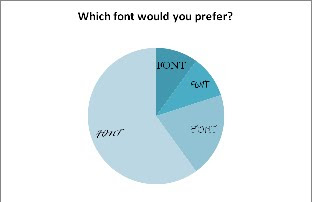
The Rage Italic font was most popular among those who were asked, however, in retrospect, this font seems too difficult to read for opening titles, and should probably be reconsidered.
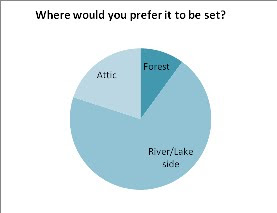
‘River/Lake side’ was a popular choice among those who took part in the questionnaire. However, this may be a difficult location to shoot due to the time limit and certain restraints within the group, so we may need to adapt from this.
Friday 12 February 2010
Thriller Planning (Friday, 12/02/2010)

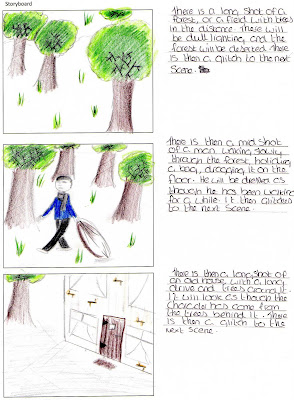
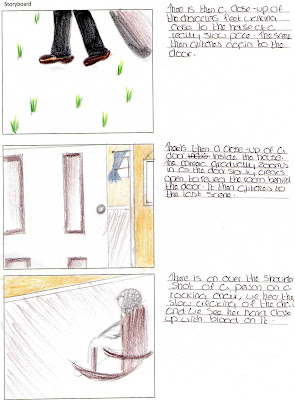
Alex worked on the final storyboard and annotated it in order to complete that stage of our research and planning. Miss Dughan gave her opinions on the filming and what errors may be made, such as the lighting in the indoor sequences we planned, as the white balance may be off if the room is not well lit. Shaun and I also worked on the risk assessment, assessing risks such as injury and damage to equipment.
We intend to carry on our research and planning (including finding a cast, locations and costumes) during the February half term, and should have it completed, or very nearly completed, by the return to college. This will enable us to be on track for filming.
Thriller analysis - (Friday, 12/02/2010)
(00:00 - 03:00)
Camera:
In the opening credits, there is a long shot of James walking across who proceeds to shoot a gun at the camera. This immediately creates the effect that the film is going to have lots of action and fighting scenes in. Afterwards, there are lots of long shots in order to establish the setting, showing surfers and then, what I presume to be, German army officers.
There is a close up of James, establishing him as the main character and the one the audience should focus on the most. All the shots are in quick succession, setting the fast and action pace for the film.
Sound:
There is the familiar James Bond theme at the start of the opening credits, which immediately engages the audience as you expect it to live up, if not succeed, the expectations of the previous films. There is a gun shot when James fires towards the camera, again establishing there will be lots of action in the film. Finally, there is the ambient sound of the sea to begin with, letting the audience know it is not set in England, but in a foreign place abroad, which is a typical characteristic of thrillers. The sound creates tension, as the incidental music of the soundtrack is constantly played throughout the 3 minute clip, leading the audience to expect a climatic ending.
Editing:
The graphics at the beginning show circles following horizontally across the screen and then track James, as if looking down the barrel of a gun. This again establishes the film as having lots of action and gun-fights in. Apart from this, the only editing used is basic straight cuts, which are quick to set the tempo of the film.
Mise En Scene:
The colours used at the beginning include mainly black, red and white. Black and white give a authentic and 'business like' feel, whereas red is usually associated with blood, which would fit in with the film genre. James is also dressed smartly, making him appear trustworthy and suave, as the audience would expect a secret agent to look. Furthermore, the army costume of the guards and war setting establishes that a dramatic, fighting scene will take place shortly. Props also include: a briefcase, gun and special agent equipment. These are all familiarly associated with secret agents, conforming to the audiences stereotypical views of a action-thriller film. Lastly, James gets the most screen time, establishing that he is the main character and earns the most focus.
Donnie Darko
(00:00 - 03:00)
Camera:
The sequence begins with a pan shot of a scene off of what appears to be a mountain, surveying the landscape which is mainly made up of trees. This pan continues to a road, where there is a man lying in the middle of it. This immediately makes the audience ask questions about the scene, which thrillers are intended to do. The slow zoom builds tension, as the audience do not know whether he is alive at this point. There is a pan-mid shot around his face so we are enabled to see his expression, which looks perplexed but not in pain. There is then a close up, but it is dark, making the situation seem ambiguous and not enabling the audience to fully understand who the character is. This moves to a mid-shot of a boy cycling, which is followed by a close up of a Halloween carnival sign. This again makes the audience ask questions, as this could be foreshadowing future events.
Sound:
There is an ambiguous sound that is playing over the titles, but it then becomes apparent that it is the sound of thunder. This builds tension as the audience do not know what is happening, as the screen is completely black, which gives them an open mind for what scene may proceed it. The music then becomes more tense and instrumental, coordinating with the camera shots, leaving the audience asking questions about the scene. An ambient sound of birds fits with the scene of a landscape, however is unusually eerie as it seems to not fit the intensity of the scene. The music then becomes instrumental and upbeat, ridding the audience of any tension they had before, yet still asking questions.
Editing:
At the beginning of the clip, the titles appear small and white on a black background, and in an unusual font, which fits the thriller genre. There are few titles, and accompanied by the sound of thunder, which makes the audience ask questions about the situation. After the pan shot, the title of the film appears over the horizon, which then fades to white. The male character also receives the most screen time, establishing that he is the main character in the film.
Mise En Scene:
The lighting at the beginning is naturalistic, however incredibly dark. This makes the audience believe that it is set either in the early morning, or dusk. (As the birds are tweeting, it becomes apparent that this sequence is shot at dawn.) However, after the title appears, the lighting becomes naturalistic, however incredibly bright, which makes it unclear as to where the film is going.
Monday 8 February 2010
Starting Thrillers - Planning (Monday, 08/02/2010)
Mind Maps:


Storyboarding (rough draft):



As well as this planning, we also discussed some problems we may encounter, such as leaning too much towards the 'horror' genre, and being too fast paced. One worry I had was that it would look too much like a trailer, or too unrealistic if there was too much blood, as in a horror film. We agreed to re-discuss some of our options in order to make our film the best we can.
Friday 5 February 2010
Friday, 05/02/2010 - Introduction to Thrillers
Next lesson (Monday, 08/02/2010) we are going to be choosing our groups so that we an begin planning our thrillers.
Monday 1 February 2010
Monday, 01/02/2010 - Introduction to thrillers
Typical conventions included: dark settings, use of silence, dramatic music, mysterious casting and the use of black and red in mise en scene. The majority of the class, when asked, said that Lost Highway was their favourite out of the three clips as it had more traditional conventions of a thriller, including the use of darkness and silence, as well as ambiguous characters.
We then began to watch The Usual Suspects in order to develop an interest in thrillers to aid us with our coursework.
I found this lesson helpful in distinguishing between a trailer and opening sequence, as I learnt some new conventions. It was also helpful to see other people's work in order to see what is expected of me when producing this piece of coursework.





